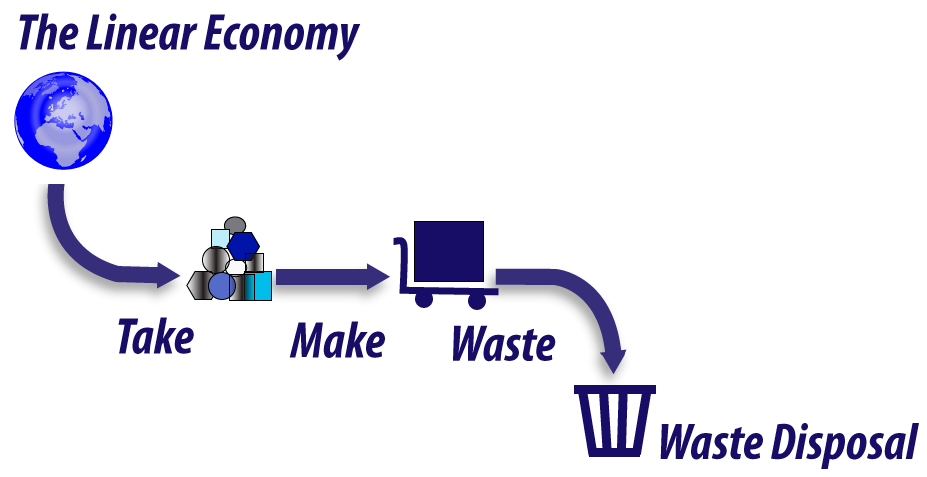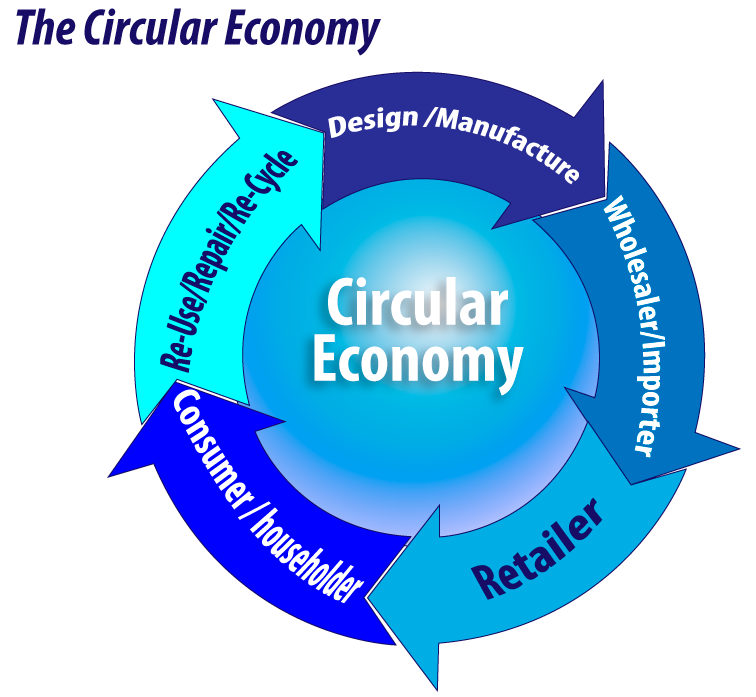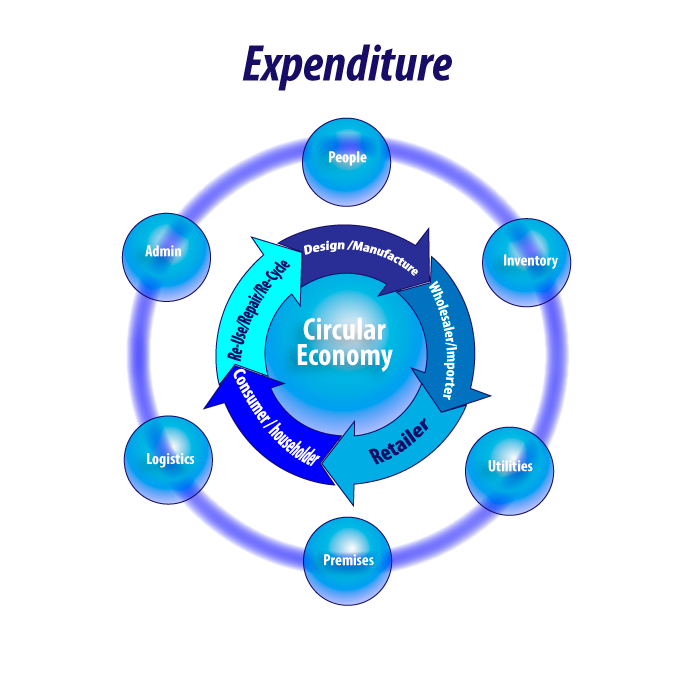The ‘Circular Economy’ and you
Is your business embracing a ‘circular’ approach?
Yes, we mean ordinary businesses making small changes to embrace the advantages of the ‘Circular’ approach.
We find; on discussion, that the understanding of the ‘circular approach’ is at best varied and often misunderstood. Many only relate it to the high profile mis-use of plastics in our environment. But it’s much deeper and more encompassing than that. Your small changes have a massive knock on effect.
In this blog we discuss the benefits of this concept from a business systems and product basis.
We must point out that there has been an incredible amount of work already done by many to change policies and understanding at national and international level.
What is a circular approach?
Traditionally in a linear structure, materials are consumed and wasted at end of life. This is exactly the same for the resources that produced them - all is ultimately wasted.
Take – Make - Waste

Linear economy
In a circular approach materials and resource are kept active by reducing waste and re using as much as possible by either recycling, primary part re use, or by re- engineering functions.
It is applicable to all business types, often at different points in the circle.
Take – Make – Take - Make

Circular Economy
Adding Value to your processes
From a business perspective, in a linear economy you are ‘throwing away as waste’ the value you previously added – This approach increasing costs, damages the environment and misses the opportunity to offer enhanced benefits to more aware consumers.
As can be seen from the Circular infographic the approach is reliant on all functions within the value stream.
Each element has individual needs but ultimately all rely on the core message which is
Take, Make and make again
How do you make the change?
Of course, the entire process and implications of change need to be thoroughly understood before embarking on such a change. We recommend you engage a professional to help you to implement change. Here our top tips:
- Understand your business differently. Traditionally business has measured cost not value. Make waste your enemy. Key point - waste is not just physical things but the less obvious like space, inventory, people and time. If you waste less your costs reduce. [What is a Value Proposition?]
- Value map your business - it is so revealing! – as a high level three views reveal much:
- Do my customers pay for?
- Do we have to do because of legislation?
- Do we do because we do?
- Pose the business questions on - What can we re use? What can we use that is a waste stream of others? How can we design our products services to have a higher circular element.?
- Target improvements as objective goals – this then focusses business delivery on a measurable basis. Important point - explain your strategy clearly and appoint a senior champion to deliver. You can measure how well you are doing and target both support and investment on a strategic basis.
- Engage both your customers and suppliers - the more circles of value that can be created the faster the benefits will be evident.
- Relationships have to change into a more collaborative approach to speed the transition [How suppliers add value]
Of course never forget that If you do the same things you get the same results!
Therefore – your Business model becomes circular all following your opportunity to add value not cost.
We in addition help business to align expenditure to value in a circular manner - the benefits extend further than the circular approach they can also be seen positively in your financial statements and very much aid your competitiveness - welcome news indeed!
Expenditure follows Value, creates value, is of long - term Value and becomes ‘circular’ in its self!!

Expenditure
Two obvious outcomes
- Business performance and environmental protection go hand in hand a virtuous circle.
- Your business growth is sustainable as it evolves by a different route. The route of ‘push’ products and services at customers/markets is well known. The idea that your product or service is demand driven on a circular basis is based on need and marketed accordingly is a real opportunity to be different and be known as such.
Notes: Further understanding on The Circular Economy can be obtained from the Ellen Macarthur Foundation
How we help
Having been involved in this area; working with many business types, from both ‘product and service supply’ and ‘design and concept’ basis. We are here to support business in design, benefits and process creation and internal delivery.
[Business review for business growth]As hands-on practitioners we guide, mentor and use our experience to deliver against your needs not ours. We are truly independent and on your side.
Contact Paul for an initial discussion






